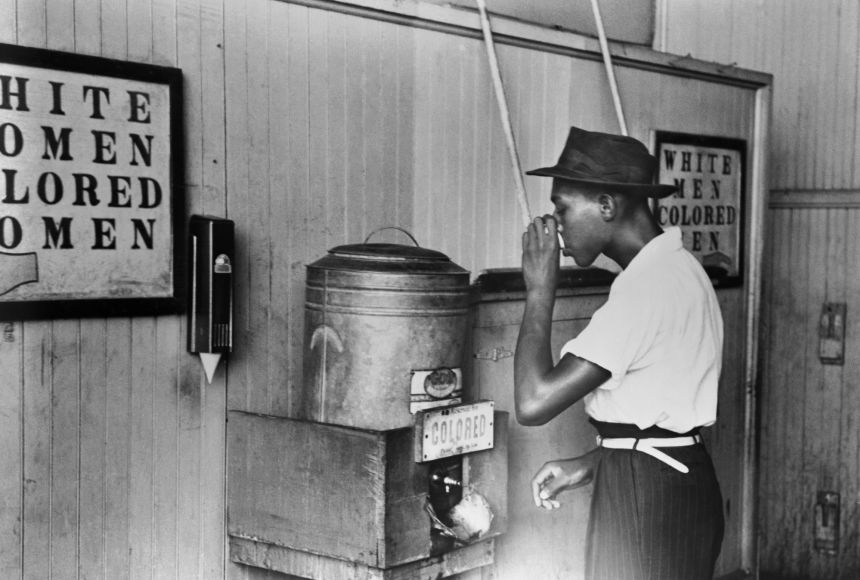ENCYCLOPEDIC ENTRY
ENCYCLOPEDIC ENTRY
The Black Codes and Jim Crow Laws
The Black Codes and Jim Crow Laws
After the United States Civil War, state governments that had been part of the Confederacy tried to limit the voting rights of Black citizens and prevent contact between Black and white citizens in public places.
Grades
5 - 8
Subjects
Social Studies, Civics, U.S. History
Image
Colored Water Fountain
Here, an African-American man drinks from a water fountain marked "colored" at a streetcar terminal in Oklahoma City, Oklahoma in 1939.
Photograph by Bettmann

Media Credits
The audio, illustrations, photos, and videos are credited beneath the media asset, except for promotional images, which generally link to another page that contains the media credit. The Rights Holder for media is the person or group credited.
Director
Author
Production Managers
Program Specialists
Producer
Intern
other
Last Updated
October 30, 2024
For information on user permissions, please read our Terms of Service. If you have questions about how to cite anything on our website in your project or classroom presentation, please contact your teacher. They will best know the preferred format. When you reach out to them, you will need the page title, URL, and the date you accessed the resource.
Media
If a media asset is downloadable, a download button appears in the corner of the media viewer. If no button appears, you cannot download or save the media.
Text
Text on this page is printable and can be used according to our Terms of Service.
Interactives
Any interactives on this page can only be played while you are visiting our website. You cannot download interactives.